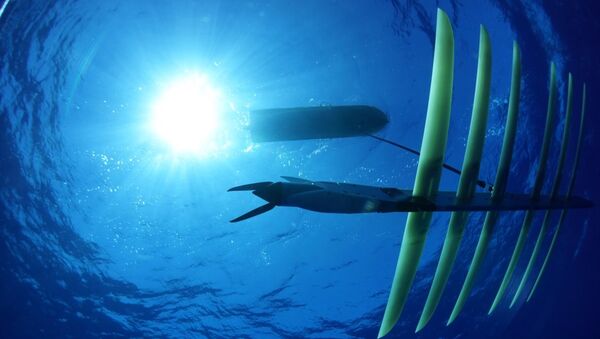The UK parliament is due to make a decision on replacing its ageing fleet of Vanguard class submarines, which carry the Trident II D-5 ballistic missiles to be used as a weapon of last resort as part of Britain's nuclear deterrent program.
Giant 'Stop Trident' projection illuminates Houses of Parliament https://t.co/AVponJfhy1https://t.co/uLIMwwjOM9
— Ruptly (@Ruptly) 26 February 2016
The issue of the cost of replacement and the very use of nuclear weapons has triggered a political battle within the UK Labour Party, where its leader Jeremy Corbyn is opposing the replacement. But his party policy of pro-replacement, supported by many unions whose members' jobs could be put at risk in the event that the program is not continued.
#Corbyn at #StopTrident rally: "If elected leader, I will not be seeking to replace #Trident" pic.twitter.com/EhgbwtaceN
— Sputnik UK (@SputnikNewsUK) 27 February 2016
Now, however, a new report from the British American Security Information Council (BASIC) says the whole issue of stealth submarine warfare is being brought into question because of the rise in the number and use of Unmanned Underwater vehicles (UUV) and Unmanned surface vehicles (USV), which are cheap to deploy and can detect submarine movement — putting the Trident program into jeopardy.
Will #Trident still work in the future? Developments in antisubmarine warfare could be decisive http://bit.ly/1TcwR0O
Posted by British American Security Information Council on Friday, January 22, 2016
BASIC author David Hambling says:
"The availability in large numbers of low-cost unmanned platforms, known as unmanned vehicles or drones, equipped with sophisticated sensors and able to operate in swarms, is likely to be highly disruptive to naval operations over the next decade, particularly those dependent upon stealth."
Drone Danger
He says submarine developers aim to reduce the signature of ballistic missile submarines (SSBNs) so that they can remain undetected. But the laws of physics — not to say common sense — suggest that a boat five hundred feet long and weighing sixteen thousand tons, carrying an operational nuclear reactor, cannot be made to disappear utterly at close range.
"Small unmanned platforms can carry many types of sensors — active and passive sonar, magnetic anomaly detectors, wake detection LIDAR, thermal sensors, laser-based optical sensors capable of piercing seawater and others. A submarine which can be seen by any one of these will cease to be invisible. A submarine whose location is exposed is highly vulnerable to instant attack. If submarines are easily detectable, they lose all their advantages as strategic weapons platforms," Hambling says.
Already, Coyote drones — developed for the US Navy — can be dropped from anti-submarine aircraft, fly down to the surface of the sea and use Magnetic Anomaly Detectors to assist engineers in the aircraft detect submarines. However, the next-generation underwater technologies are already being used to even greater effect.
Swarms of underwater gliders and drones are currently capable of monitoring vast areas of the ocean for months at a time detecting submarines and the US, China and Russia are all working on improved technologies to deploy them.
As the UK parliament gets set to vote on Trident replacement — some time before the fall of 2016 — some of its supporters are beginning to have second thoughts over the cost and capability of the program.



